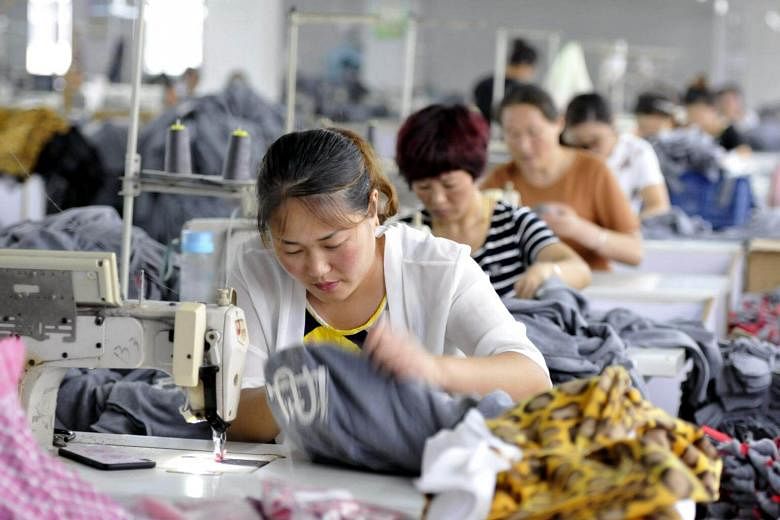BEIJING (BLOOMBERG) - China's factory prices jumped more than estimated, as domestic demand remained resilient and the government continued to reduce excess industrial capacity. Consumer price gains matched projections.
The producer price index rose 6.9 per cent in September from a year earlier, versus an estimated 6.4 per cent in a Bloomberg survey and a 6.3 per cent August reading. The manufacturing PPI sub-index climbed 7.3 per cent, the most in nine years.
The consumer price index climbed 1.6 per cent, versus a prior reading of 1.8 per cent, the statistics bureau said on Monday (Oct 16).
Aggressive cuts to capacity in industries like steel and cement, coupled with resilient demand, have contributed to factory inflation that's lasted longer than economists expected. The drive to cut pollution and boost firms' efficiency will probably continue as the Communist Party begins its 19th Congress this week.
"The economy has pretty strong momentum now, monetary policy remained loose ahead of the 19th Party Congress, and the environmental cleanup has cut the supply of commodities," said Shen Jianguang, chief Asia economist at Mizuho Securities Asia in Hong Kong and the lone forecaster in Bloomberg's survey to correctly predict the PPI reading. "But this is not sustainable. Deleveraging will be moving up on the agenda after the congress."
"Strong PPI shows that economic momentum is pretty robust in the second half," said Liu Xuezhi, an analyst at Bank of Communications in Shanghai. "It was widely expected that factory-gate inflation could slow in the second half, but apparently it's still quite resilient, which may lead to a more positive outlook."
"China's manufacturing industry, upstream in particular, continues to see decent demand," said Raymond Yeung, chief Greater China economist at Australia & New Zealand Banking Group in Hong Kong. "This PPI figure foretells a decent growth number to be out later this week. We see GDP of 6.8 per cent at the moment but should be prepared for an upside risk."
Producer prices for raw materials increased 11.9 per cent, picking up from 11 per cent in August and posting the biggest gain since April. Core CPI increased to 2.3 per cent, the fastest pace since 2011. Prices for consumer goods rose 0.7 per cent while those for services added 3.3 per cent.

